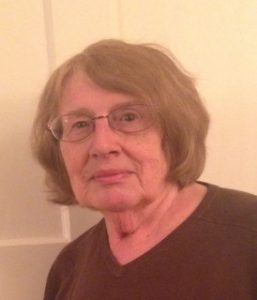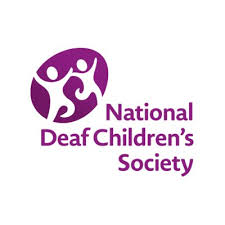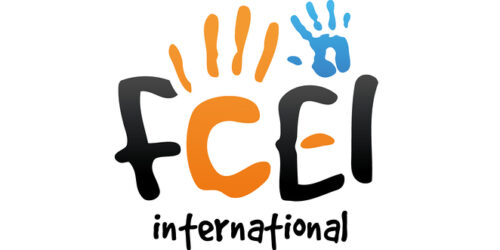Number, maths and deaf pupils
by Susan Gregory

Susan Gregory
Until the late 1970s, compared with the teaching of language and literacy, number work and maths received little attention in the concerns and discussions of Teachers of the Deaf. A major review of deaf education, Conrad ‘The deaf schoolchild’ published (1979) makes no reference at all to mathematical development in deaf children. In the ten years 1960-69 the main deaf education journal ‘The Teacher of the Deaf’ had only four articles on this topic in their journal, despite there being six issues of that journal a year
This is of course not surprising and this assertion is not a criticism. The main focus of deaf education was overwhelmingly on the development of language and communication skills. Thus, the emphasis on developing number skills at school may have seemed less important for deaf children because of the more pressing need to develop language and communication. A further possibility is that Teachers of the Deaf may have chosen this profession because of an interest in developing language rather than mathematical skills. The lack of attention to this area was possible because most education of deaf pupils took place in special schools where the syllabus was independent and decided by the schools and teachers themselves
The 1960s
The four papers presented in the 1960s are, however, of interest. Two papers, reflecting the research of the time, focussed on the delay experienced by deaf children. Wollman’s paper looked at both the attainments in English and arithmetic on a representative sample of 14-16-year-old pupils. Attainments overall were poor when compared with hearing children. While most of the report focussed on English, some interesting findings emerged about the deaf group. Hearing loss affected scores in English, those with a moderate loss doing relatively better than those with a severe loss, but did not affect scores in arithmetic which were independent of the degree of hearing loss. The author suggested that the tests results in arithmetic indicated that the elementary processes were given too much attention to the neglect of more advanced subjects which would be of interest to older pupils. He felt some topics owed their inclusion to the influence of tradition rather than intrinsic importance.
McKenna introduced her paper by saying that it is generally accepted that deaf children were comparable to hearing children on concrete tasks, but did less well on more abstract tasks. Based on the work of Piaget, she was interested in the child’s concept of number, that for example ‘one’ had the same meaning independent of the type of objects/places/people counted. This concept was acquired around the age of 6-7 years in hearing children and her study was based on 30 deaf children in the range five to eight years. Deaf children did less well on the tasks set, and this was apparent from the age of 5 years. This was consistent with her overall finding that deaf children by 11 years of age were two to three years behind in computation. She attributed this delay to limited play experiences and recommended more manipulative play.
However, as well as these considerations and discussions of attainment, there were two interesting and thoughtful papers in the 1960s. Pearson (1965) suggested that the problem in teaching mathematics to deaf and partially hearing children was the fact it is a language issue, that ‘number development for deaf children was ‘shrouded in the vocabulary of the spoken and written word’. He suggested that there is a need to make a break between numbers and ‘verbal language’ that ‘long before paper is ever used, there must be lots of stories, rhymes etc. This meant that there would have to be contrived play situations, backed up by continuous explanatory talk by the teacher, with limited, defined and often repeated vocabulary’. Everyday experiences would need to be used to reinforce mathematical notions but at the same time there must be introduction of play-based experiences in an orderly way, as mathematics was a logical discipline. Children should not be exposed to computational practice until they are ready. (His paper then describes in some detail various mathematical notions and how they should be taught. The notions, which may seem strange at the present time, would seem consistent with ideas of mathematical development then.)
Harrison (1964), who was an early advocate of mainstream education for deaf children, described what he had learnt from the Nuffield Priory scheme, an approach used with hearing children which was becoming known as the ‘new mathematics’. He argued that this was applicable to deaf children. This included the notion that
‘Rules should not be taught but rather discovered in as many different ways as possible so that when the rule is finally presented it is regarded as an obvious statement, readily accepted.’
‘Don’t blame the child if they get work wrong, it is probably your fault.’
‘A blackboard drawing cannot take the place of the real thing, A child cannot regularly appreciate the properties of a pyramid for example, until he has made one, handled it, and compared it with other shapes’
He discusses how the education of deaf pupils had not taken into account developments in teaching maths in mainstream education. Because of his responsibility for a number of children in mainstream schools he was finding he had to address the issues raised by the Nuffield programme.
The 1970s and 80s
From the 1970s, however, ideas were beginning to change. This was due to a number of factors. Following the Warnock Report leading to the 1981 Education Act, there was a growing trend for deaf children to be educated alongside hearing children. The Warnock report (1978) had set out this principle suggesting inclusion (previously known as integration) should be the aim for as many children as possible. The National Curriculum setting out a nationwide curriculum to be followed by all was introduced in 1988, with Standard Assessment Tasks (SATs) being introduced in 1990. These developments meant that the education of deaf children needed to be brought into line with that of hearing children.
This was facilitated by the fact that hearing aids were improving all the time and together with greater emphasis on early diagnosis of hearing loss, deaf children became more able to access sound and spoken language.
This had implications for Teachers of the Deaf and for the maths curriculum where the aspiration was for all children to follow the same curriculum.
One of the most detailed study of deaf children and their mathematical skills was carried out by Wood and his colleagues and published in 1986. The assessment they used was the Vernon-Miller Graded Arithmetic Test (1976). It was used with a sample of 1005 children of whom 540 were deaf. They were tested during their final year at school.
Type of school Hearing loss Maths age
Special schools 92dB 12.1
Partially Hearing Units 68dB 12.8
Mainstream pupils 48dB 14.00
Hearing pupils – 15.5
The first conclusion of this study was the expected one, that hearing children did better than deaf children. This was despite the fact the test chosen included little written language and was deliberately selected to minimise the effects of language. However, a more interesting finding, established through statistical analysis, was that, within the deaf group, the degree of deafness was found to be ‘not very important’ in its effect on a child’s score. They concluded from this that hearing loss, in itself, was not a barrier to the development of mathematical competence. They also found if hearing loss was taken into account, i.e. they compared children with similar hearing losses with each other, the school setting itself also had only a minor effect. Overall, the discrepancy between deaf and hearing children on their performance on mathematical tasks was less than that found in studies of tests of language ability.
There was an interesting finding related to language use in the various problems. They compared two questions that required similar mathematical skills:
- Subtract: 560-192
- Mary bought a record for £1.69. How much change did she get from £2.00?
Despite the second problem using more written language and being mathematically more difficult, 17 out of 61 deaf children who got the first question wrong got the second one right.
Their research is complex and covers far more areas than it is possible to include here. However, their general conclusions are that where there is a difference between the performance of deaf and hearing children it is more likely to be due to delay rather than their approach to the problems. In conclusion they suggested ‘that the time is right to consider whether, particularly in the later years of schooling, our concern for the linguistic development of children leads us to underestimate and undervalue their potential and needs in other areas of the curriculum.’
Later developments
In the 1990s there was a move to a focus on specific areas of mathematical development and also a consideration of the factors that could contribute to the delay in development. Gregory (1998) looked at the language used with deaf children. She suggested that hearing children would have been subjected to numbers very often, having their toes and fingers counted, counting steps going along the road or climbing stairs, nursery rhymes that involve counting, counting knives and forks when laying the table and many more. For many hearing children this is a day to day occurrence, but this may not be the same for deaf children and this experience may be important. ‘Numbers were familiar and formed a major part of parent child conversation and particularly games. While of course it would be possible to teach these number words, it would be less easy to reproduce the frequency and context of the repetitions. This did not apply exclusively to language use with young babies, as conversation with older children includes ‘number talk’: the speed of cars, the size of clothes, the time to be back home’.
Another issue discussed was the possible confusion within language. Some words used in a general sense in everyday conversation have a very particular use when used in a mathematical context, e.g. similar, difference, divide. For example, a ‘high’ number is not one near the top of the page, but one large in value. In addition, mathematics has its own vocabulary, e.g. denominator, hypotenuse, isosceles. Consideration of language use in mathematics has been the basis of studies by Pau (1995) and Kidd (1991).
In the 1990s, following the recognition of sign language as a legitimate language and the development of sign-bilingual approaches to education, there was a developing interest into the way in which sign language could be used in the teaching of mathematical concepts. Nunes and Moreno (1997) carried out a number of studies on this topic. One area which was a focus of attention was the use of fingers. They pointed out that deaf children could be confused if they counted using their fingers but also for directing attention. A later study, however, showed how deaf children in a sign bilingual programme were developing complex solutions and using each hand differently. Because of the way they transferred signs from one hand to the other they could use both effectively. The use of signs, however, has not been developed on a larger scale, and the continuing focus on maths education remains on the majority of deaf pupils who are being educated in mainstream schools.
Recent studies of mathematical development continue to show a delay in development in deaf children. Research, in general, has tended to focus on more specific areas. One of these is the structure of statutory assessments, such as the UK Standard Assessment Task (SATs), the performance of deaf children and possible reasons for problems (Swanwick, R, Oddy, A and Roper, T 2005). Another approach has been to focus on specific mathematical concepts such as inverse relations (Nunes, T et al 2008).
Overall, mathematics has been and remains an under-researched area in deaf education. There are reasons to be optimistic. If performance in mathematics for deaf pupils is not simply correlated with degree of hearing loss or placement and if the patterns of performance are different for deaf and hearing pupils, reflecting on the issues, together with the development of creative procedures and practices may improve matters for deaf pupils, and maybe for hearing pupils also.
[1] His paper then describes in some detail various mathematical notions and how they should be taught. The notions, which may seem strange at the present time, would seem consistent with ideas of mathematical development then.





